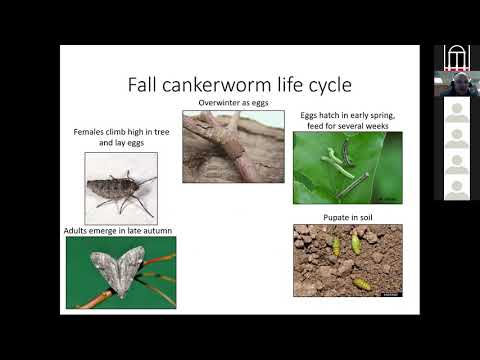Dr. David Coyle’s presentation on “Insect and Fungal Pests in Urban Trees” covers several key points:
- Urban trees face various environmental challenges, including precipitation, wind, pollution, and temperature differences compared to natural areas. These factors can stress trees, making them more susceptible to pests.
- Temperature plays a crucial role in tree health. Warmer nights lead to more water loss from leaves, affecting photosynthesis and energy storage. This stress can lead to a perpetually stressed tree, unable to make and store as much energy as it would like.
- Insects, particularly ectotherms (insects whose temperature is influenced by the outside temperature), grow faster and larger in warmer environments. This can lead to increased pest populations and more damage to urban trees.
- Fungal growth also increases with rising temperatures, contributing to the stress on urban trees.
- Urban trees are more susceptible to defoliating insects like the forest tent caterpillar and the Eastern tent caterpillar, which can cause significant damage and stress to the trees.
- The emerald ash borer (EAB) is a significant threat to ash trees in urban areas, causing extensive damage and death.
- Bark beetles and ambrosia beetles are other pests that attack stress trees, consuming the tree’s phloem or creating galleries within the tree, leading to further stress and potential death.
- Laurel wilt, spread by the red bay ambrosia beetle, is a devastating disease affecting lauraceae trees, including bay trees, camphor trees, and avocado trees.
- Scale insects, such as the crape myrtle bark scale, can cause significant damage and stress to trees, especially in urban areas.
- Spotted lanternflies are a potential major pest of fruit trees and vines, causing significant damage and stress.
- Bud and root rots, such as Ganoderma, are secondary pests that feed on dead tissue, contributing to the decline of trees that are already stressed or damaged.
- The presentation emphasizes the importance of good tree care, including proper planting, watering, and pest management, to mitigate the impact of pests and environmental stress on urban trees.
